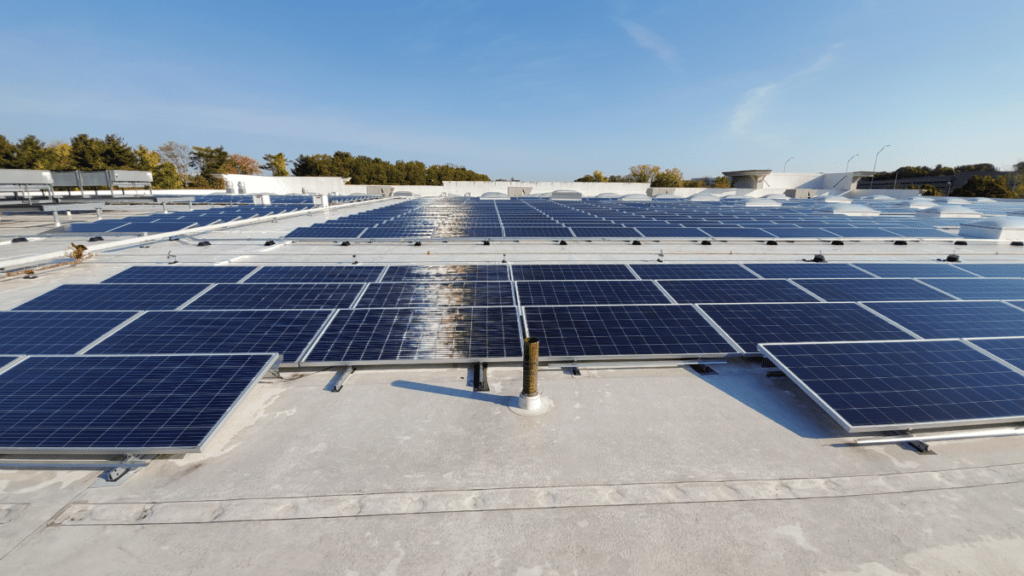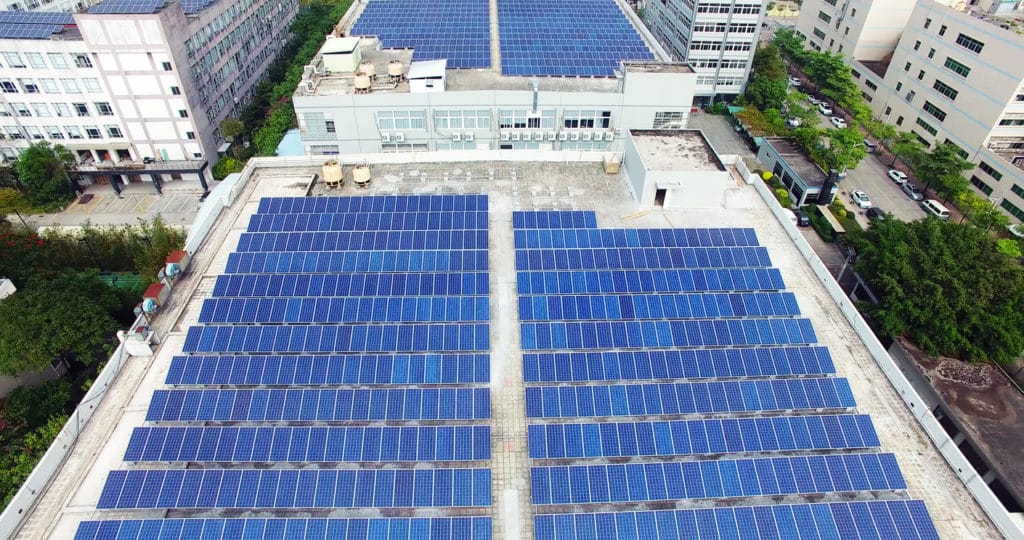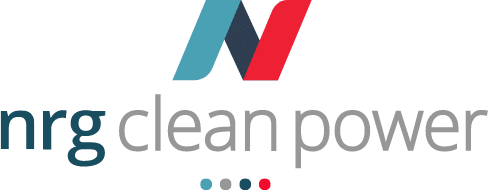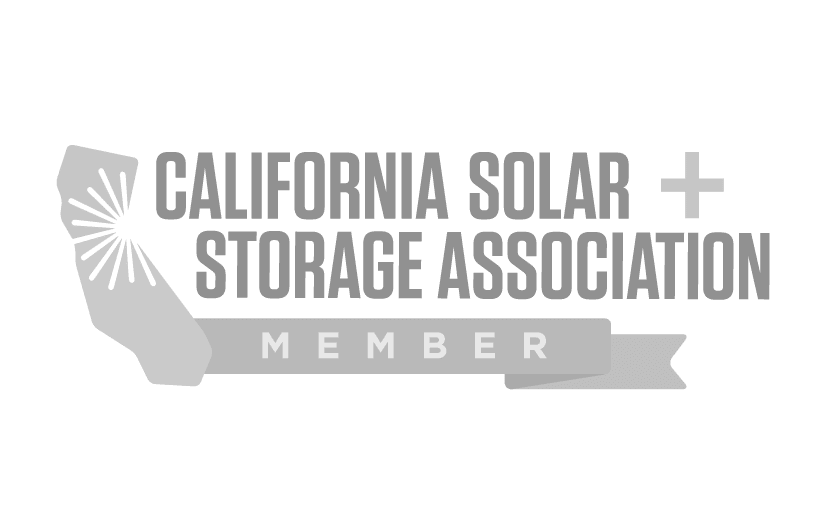
Do solar panels on flat roofs work? If you’re keen on investing in renewable, clean, and green solar energy, you do not have to let a flat roof keep you from installing a solar panel system.
So, can solar panels be installed on flat roofs?
Absolutely yes! As long as your roof is in good condition and no large obstructions are blocking the sunlight and diminishing your energy output.
This is excellent news for most American homeowners who prefer flat roofs. However, it would call for some adjustments.
Read on to understand the pros and cons of solar panels on flat roofs.
The Advantages of Flat Roofs for Solar Panel Installation

Maximize Solar Panel Output
This is good news for you whether you use renewable energy on a domestic or commercial scale. How so?
Solar engineers need to consider the angle of the roof and its orientation when installing solar panels on sloping roofs. In addition, PV panels will produce much less than the desired output if the roof faces east, north, or west.
However, on flat rooftops, you have the freedom to adjust the angle of your solar panel system, so it faces between south and west. You can ensure it aligns with the latitude of your geographic location too.
Since this is the ideal location for any solar panel, you can derive better output from your set-up than you would from a slanting roof not facing the right direction.
Lower Installation Costs
The total cost of installing solar panels typically ranges from $12,000 to $30,000. Of this 10% – 15% account for labor and installation costs. These costs are lower on a flat roof since it is safer and easier to access without the need for safety equipment.
Less Risky
Compared to a slanted roof, there are significantly fewer chances of men or material falling off the roof during installation.
Less Damage
Ease of access and low installation costs aside, another major advantage of a flat roof is it can withstand the wear and tear of the installation process better than a sloping roof.
There is no danger of damaging the roof, unlike in a slanted roof where the shingles may come off.
Maintains Aesthetics
Solar panels on flat roofs are not easily visible from the street. This will help maintain the overall aesthetic value of your home.
Considering all these factors, flat roofs make a compelling case for mounting solar panels. However, they are not entirely without cons.
You Cannot Overlook These Challenges
There are some major disadvantages when laying solar panels on flat roofs. These include:
Finding the Right Solar Panel Installer
This will be among your biggest challenges. When it comes to a slanted roof, solar panels can be laid flat against it. But the same cannot be said for flat roofs. Since angled mounts allow for better exposure to sunlight and optimum energy output, it will require specialized equipment to mount solar panels at an angle on a flat roof.
Unfortunately, not all companies are equipped to install solar panels on flat roofs.
Voiding of Warranty
Laying solar panels on flat roofs may render the manufacturer’s warranty void. Some companies declare their warranty void if you do not follow their installation instructions to the tee. And in most cases, installing solar panels on flat roofs is prohibited.
This is because water tends to get accumulated on flat panels, collecting in the gaps between the frame and the glass coating. This increases the risk of water breaching the silicone barrier used to seal the gaps, damaging the panels over a period of time.
Similarly, installing solar panels can also lead to leakages in your roof. While this occurs due to incorrect installation, you need to be extra cautious while installing PV modules on flat roofs.
Reduced Energy Production
Another problem to consider is the reduced production of solar energy over time. The accumulation of dust and debris on the flat solar panels will make them very dirty, thereby reducing their efficiency.
Factors to Consider for Installing Solar Panels on Flat Roofs

Installing solar panels on flat roofs is not impossible. But there are certain factors you would need to address before proceeding.
- Survey the condition of your rooftop and the potential hazards it may pose to the solar panels. Make the necessary repairs (like fixing leakages) before proceeding with the installation.
- Consider your geographic location and how much sunlight your rooftop receives. If you have buildings that tower over your house or overshadow your roof, a rooftop installation will not be your best option.
- Go for a company that offers horizontal flat roof installation as a part of its portfolio of services.
- Think of the prevalent weather conditions in your region. High wind speeds, snow, sleet, and rain can cause irreparable damage to your rooftop solar panels.
Frequently Asked Questions
Do solar panels always need to be tilted on flat roofs?
Not really, but it is highly recommended that you follow the optimum tilt angle during installation to maximize output. A tilted set-up also helps in the maintenance, because the rain can wash off any dust or debris that may accumulate on your solar panels over time. Most solar panel systems for flat roofs have a feature that allows you to change the degree of tilt after installation to suit your energy needs.
Additionally, given the high chances of damage from water seepage, getting a warranty on panels with less than two degrees of tilt is generally challenging.
Why is a minimum slope angle recommended for solar panels installed on flat roofs?
Your solar panels must be tilted at an angle of at least 10 degrees to ensure optimum productivity and hassle-free maintenance. However, even a slight tilt of three to four degrees will prevent the problem of water pooling and keep your roof and solar system from getting damaged.
A tilt will also make your solar panels self-cleaning since the flowing water will carry away any dirt and debris with it.
Are flat roof installations more expensive than sloping roof installations?
Not quite. You may incur lesser costs since flat roofs are safer and easier to access. Also, installers do not need the additional safety equipment and gear typically required when working on sloping roofs.
That said, the angled mounts required to create an incline for your solar panel can add to the total cost of your system. However, the price difference is usually in the USD 800 – 1000 range for standard 7kW solar systems for residential use.
Do solar panels on flat roofs require high maintenance?
All solar panels require maintenance. However, if you go for a horizontal installation on a flat roof, you will need to clean your solar panels more often than you would a tilted one.
That’s why experts recommend tilting the PV modules at an angle for easy maintenance.
Using a Ballasted solar racking system during installation is a great way to achieve this. Solar panels installed on flat roofs using a ballast mount do not require drilling holes into the roof to anchor the system. They use weights instead.
Conclusion
A home with a flat roof does not have to deter you from installing a solar panel system. In terms of design, flat roofs afford more flexibility since they can be oriented to face south. You can also control the angle of the mount irrespective of the direction your home faces. This will ensure an optimized system for your home or business.

Authored by Ryan Douglas
NRG Clean Power's resident writer and solar enthusiast, Ryan Douglas covers all things related to the clean energy industry.

